These easy, one-rise bakery-style Paleo Cinnamon Rolls are big, soft, gooey, and taste like Cinnabon copycats!
I've been working on this paleo cinnamon roll recipe for more than a year and I'm so excited to finally share it with you!
These are big, bakery-like traditional cinnamon rolls that taste just like Cinnabon copycats!
Or if you prefer low-carb, I have a killer Keto Cinnamon Roll Recipe you might want to also check out!
Jump to:
Yeast
Sometimes working with yeast can be intimidating. However, by using instant yeast instead of active dry yeast, we can skip having to dissolve it in warm water with a sweetener first - YAY!
We're simply going to add the yeast to the dry ingredients, then let the fully assembled rolls rise in a warm oven over boiling water. Easy peasy!
Substitutions
- Xanthan gum: While I prefer using xanthan gum, since there are varying thoughts on whether it is paleo, you can replace it with psyllium husk powder. However, it results in more of a whole-wheat-tasting cinnamon roll and the dough can be just a tiny bit harder to roll out. Also, be sure to use psyllium husk POWDER, not whole psyllium husks as they will not work in this recipe. Psyllium can usually be found in the colon cleansing section of health food stores, due to it being so high in fiber.
- Almond flour: Unfortunately, almond flour is very unique and the only replacement I know of would be sunflower seed flour, but I've never tested it.
- Gelatin: If you can't find unflavored gelatin, you can replace it with pectin. In fact, this recipe originally called for pectin, however, I've found gelatin works a tiny bit better and is easier to find. While it's not a 'make or break' ingredient, it helps to firm up and hold the dough together. Which immensely helps when rolling it up!
- Butter: You can replace the butter with dairy-free butter or ghee. If those aren't an option for you, you can replace the butter with a mild-tasting oil such as avocado oil or refined (to reduce the coconut taste) coconut oil. However, I highly recommend butter, ghee, or a butter substitute! It's a taste you can't achieve with oil.
Preparing the dough
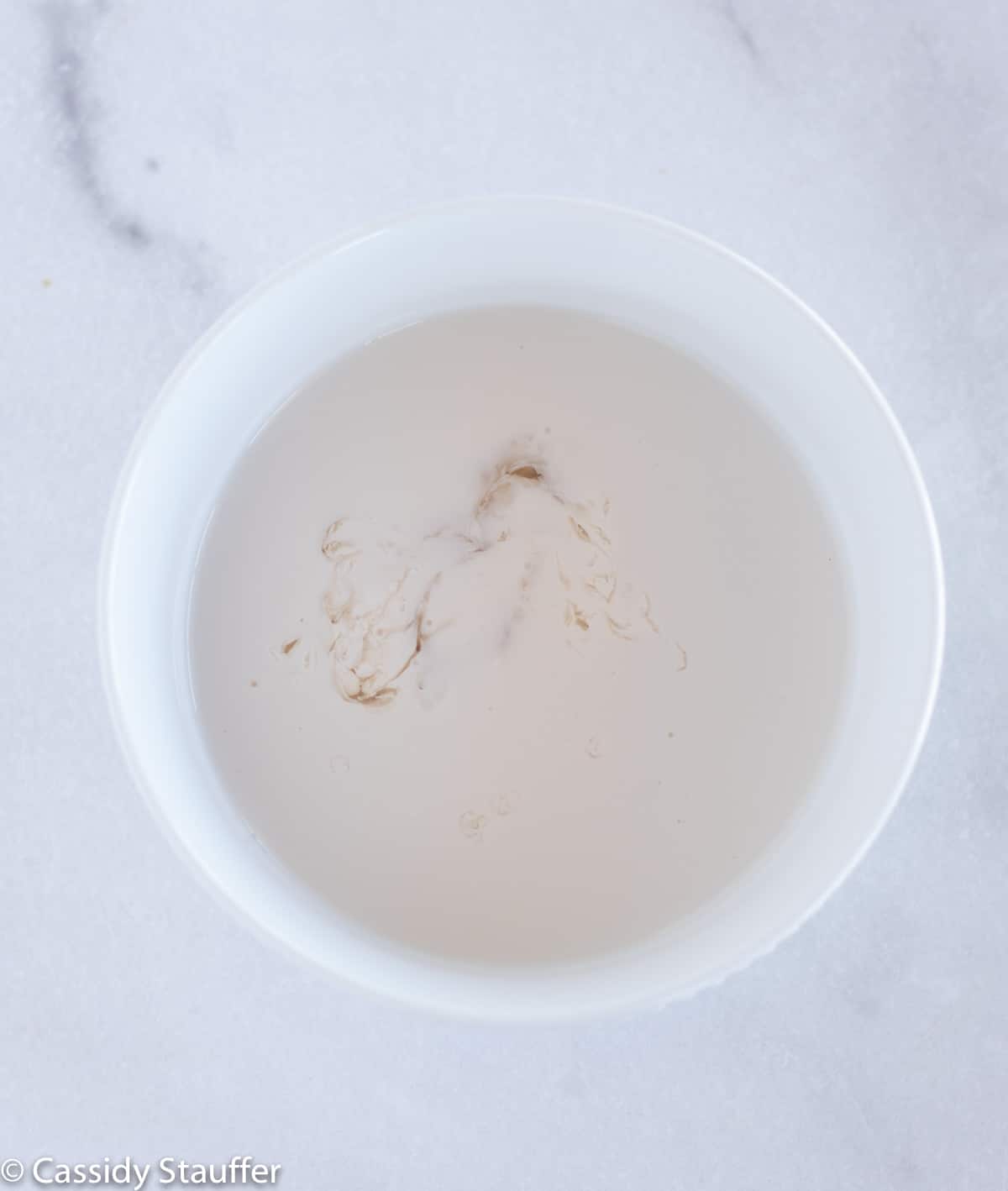
In a large bowl, mix together some non-dairy milk and vinegar. Set aside. This will be our homemade buttermilk mixture.
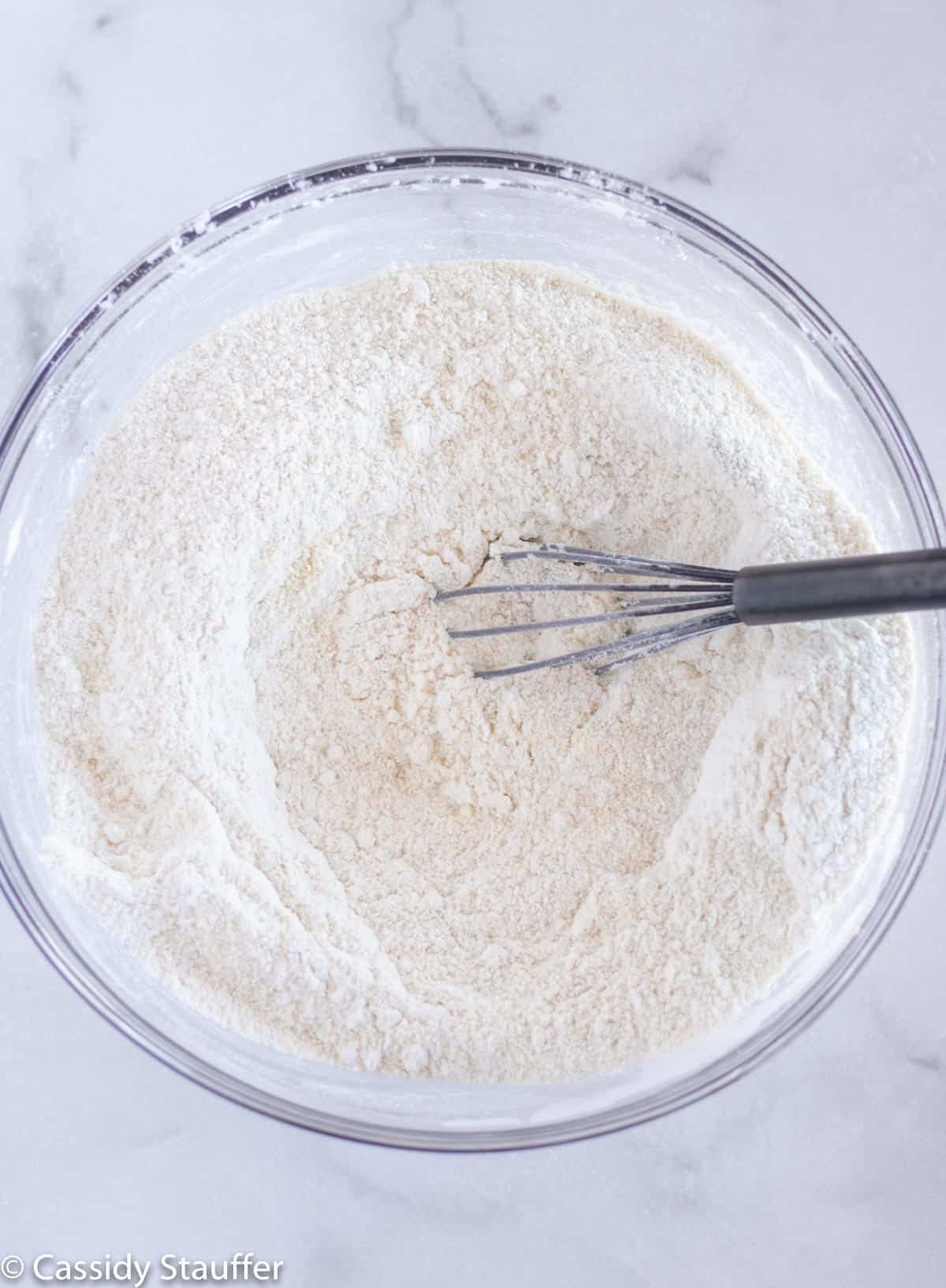
In a large mixing bowl, whisk together the dry ingredients.
This includes blanched almond flour, arrowroot or tapioca flour, gelatin, xanthan gum or psyllium, salt, baking soda, coconut palm sugar, and instant yeast.
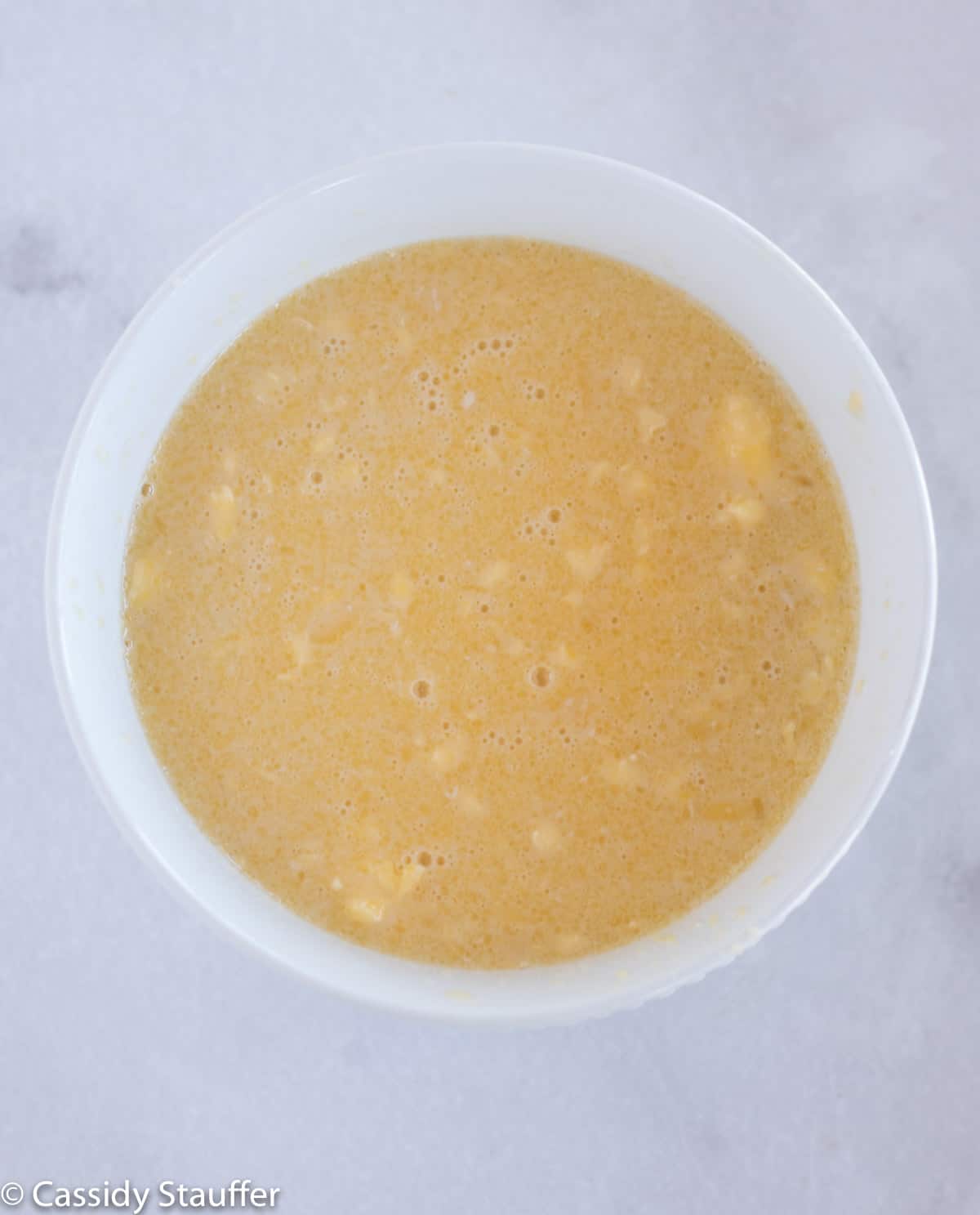
Next, add 2 eggs, melted butter (can use non-dairy or ghee), and vanilla to the milk mixture.
Then, add the wet ingredients to the dry and mix well.
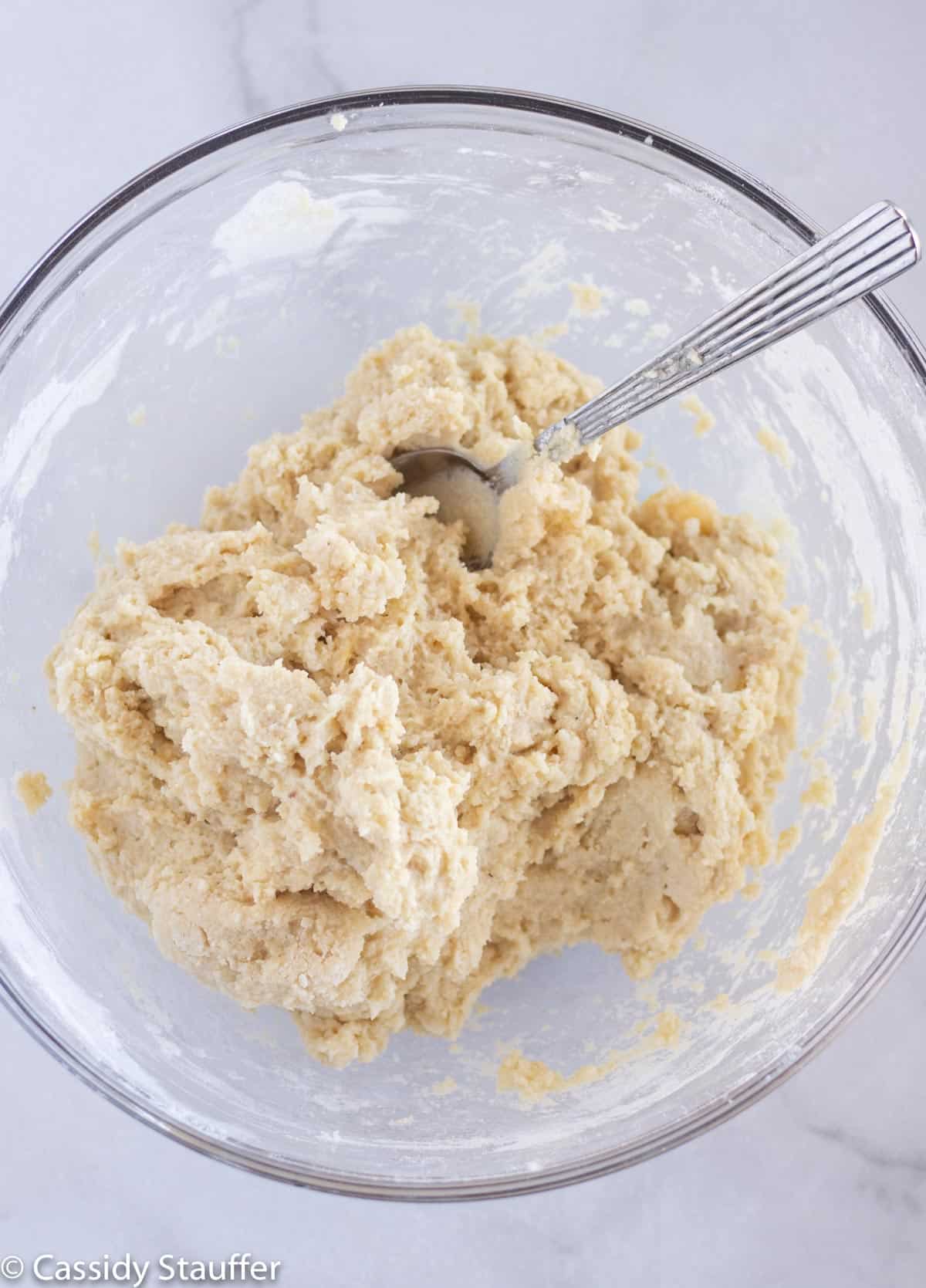
Stir well. The dough will be thick and sticky, so you might need to switch over to your hands and knead until it comes together.
Then wrap tightly in plastic wrap.
Allow the dough to rest in the fridge until thoroughly chilled and firm enough to roll out. This can take up to 2 or 3 hours. Or the dough can be left in the fridge overnight.
Filling
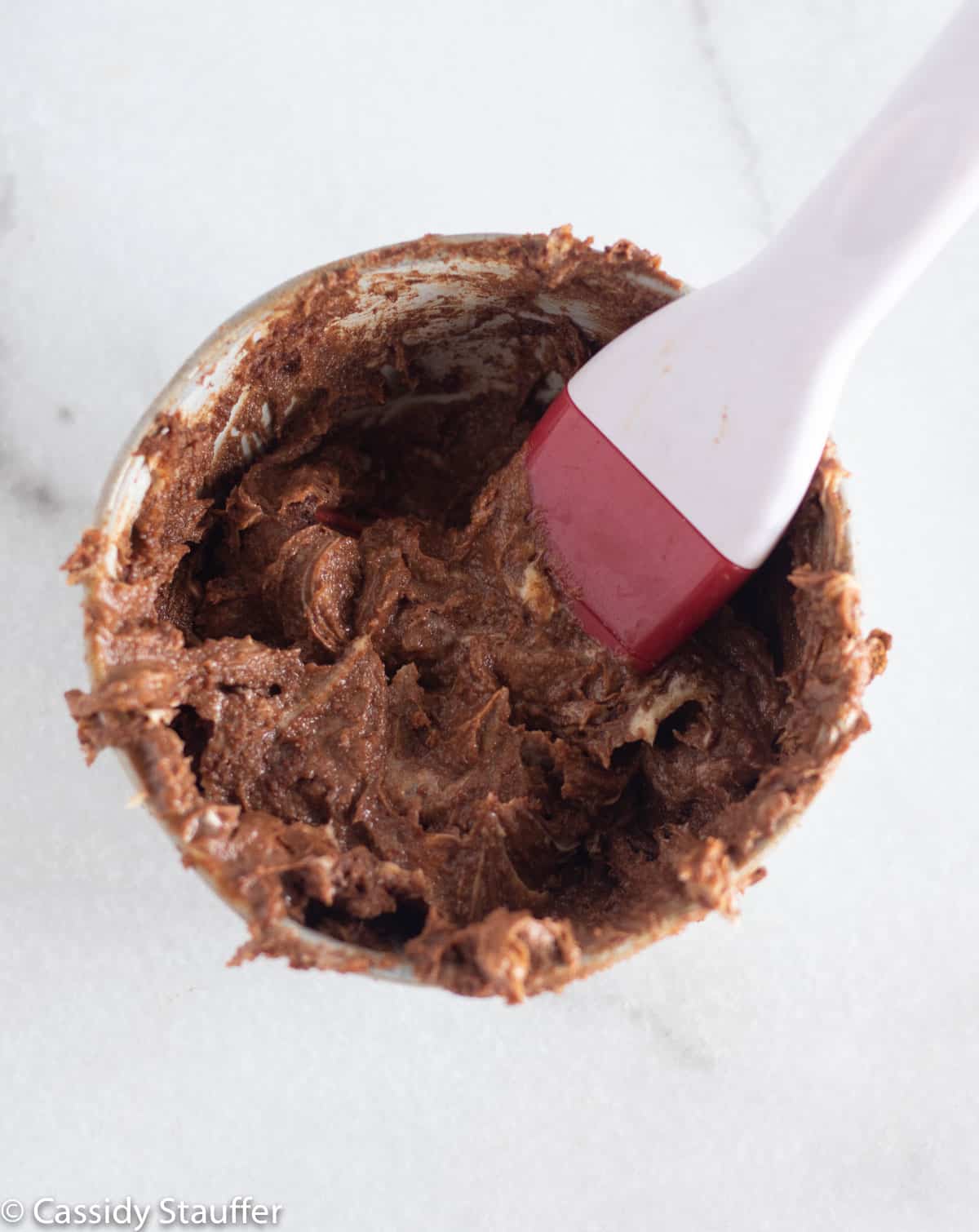
In a small bowl, combine softened butter, cinnamon, coconut palm sugar, and xanthan gum.
The xanthan gum is optional but helps keep the filling from oozing out during baking. Set aside.
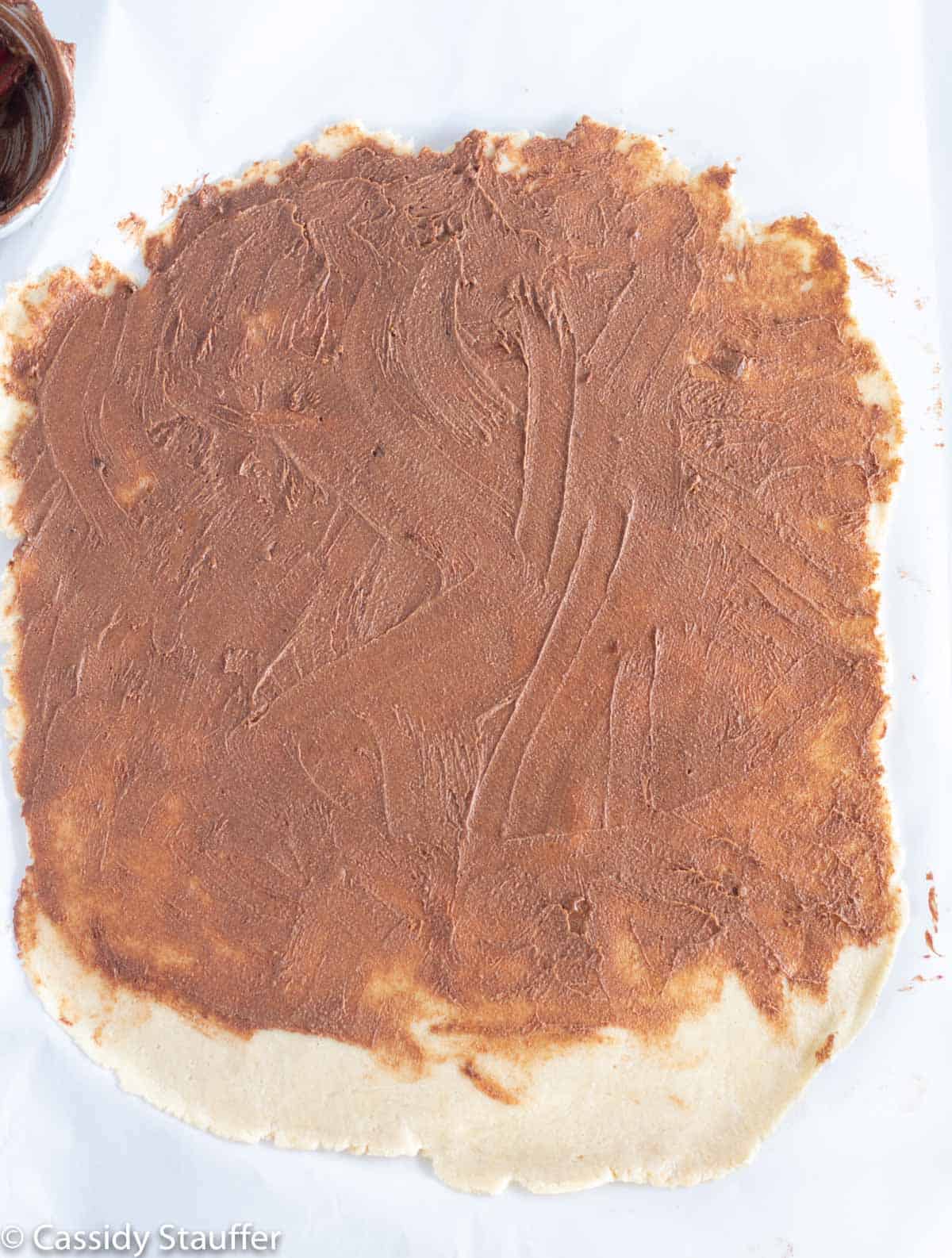
When the dough is finished resting in the fridge, tear off a piece of parchment paper that's at least 20 inches long. Generously sprinkle the parchment with tapioca or arrowroot flour.
Cover with plastic wrap and use a rolling pin to roll the dough out to around 12 x 18 inches.
Spread the filling ingredients over the dough, leaving the bottom inch dry lengthwise.
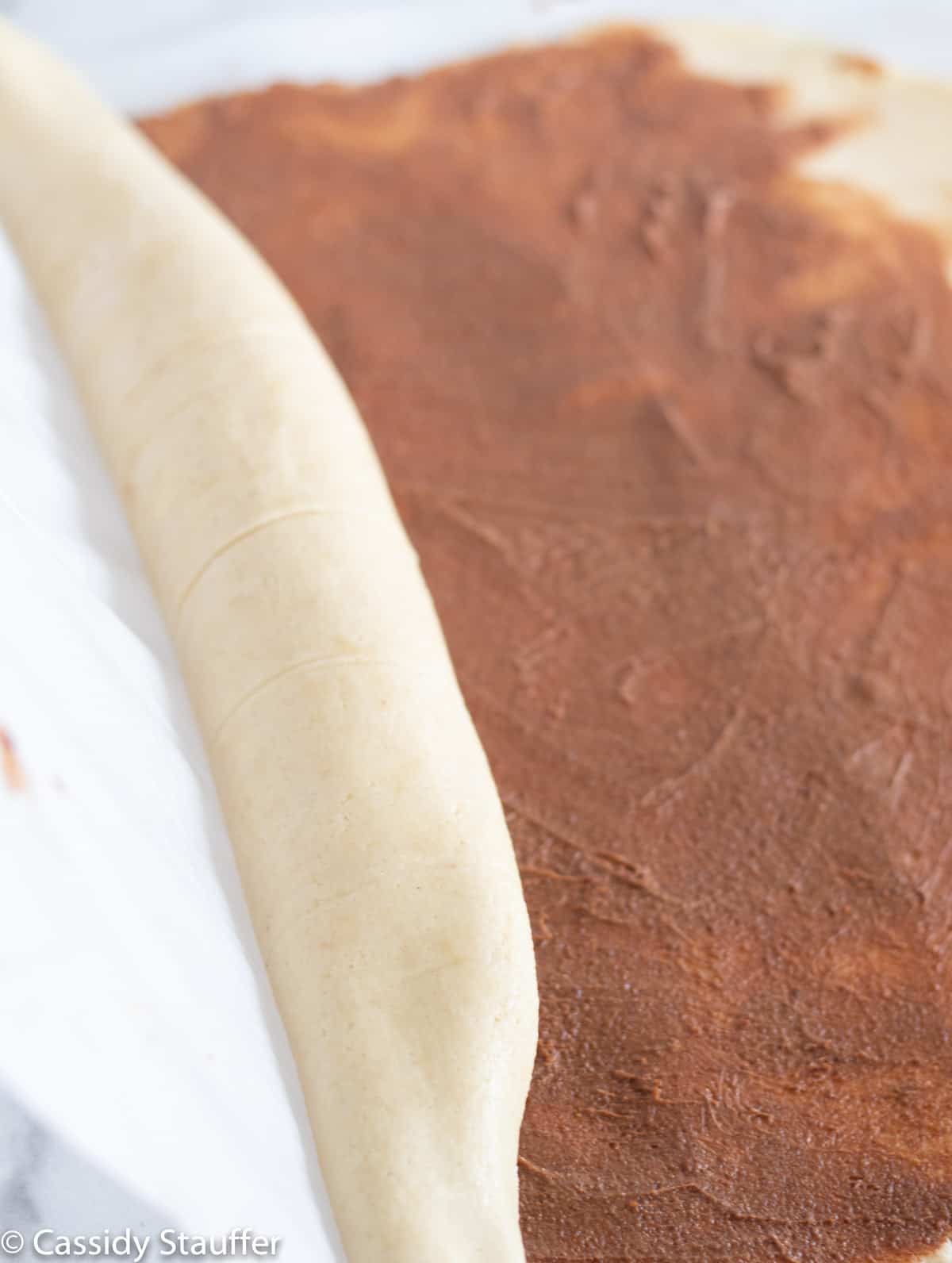
Then, start rolling the dough tightly making at least 4 or 5 rotations towards the bottom dry end of the dough. You can lift up the parchment paper to help get the dough up and rolling.
When you come to the end, pinch the bottom edge of the dough so it creates a seal.
Proofing the cinnamon rolls
Cut the dough into 8 equal-sized rolls and place in a parchment-lined baking dish. Slightly press down on each roll.
Cutting them into 8 rolls makes 8 huge rolls, however, you can cut them into 10 to 12 if preferred. If you do this, you will need to slightly reduce the baking time.
To proof the yeast: Tightly cover the rolls with plastic wrap or aluminum foil and preheat the oven to 150 degrees.
When the oven is preheated, turn the oven off, add the rolls, and leave the door cracked. After 30 minutes, close the door to finish rising. Allow to rise for 60 to 90 minutes.
Baking
After they have finished rising, remove the rolls from the oven. Preheat the oven to 350 degrees.
Once preheated, bake the cinnamon rolls for 30 to 35 minutes. Rotate after 20 minutes to ensure even baking and check to make sure they're not baking too fast since all ovens are different.
Bake until the paleo cinnamon rolls are nicely browned to prevent the centers from being doughy.
Frosting
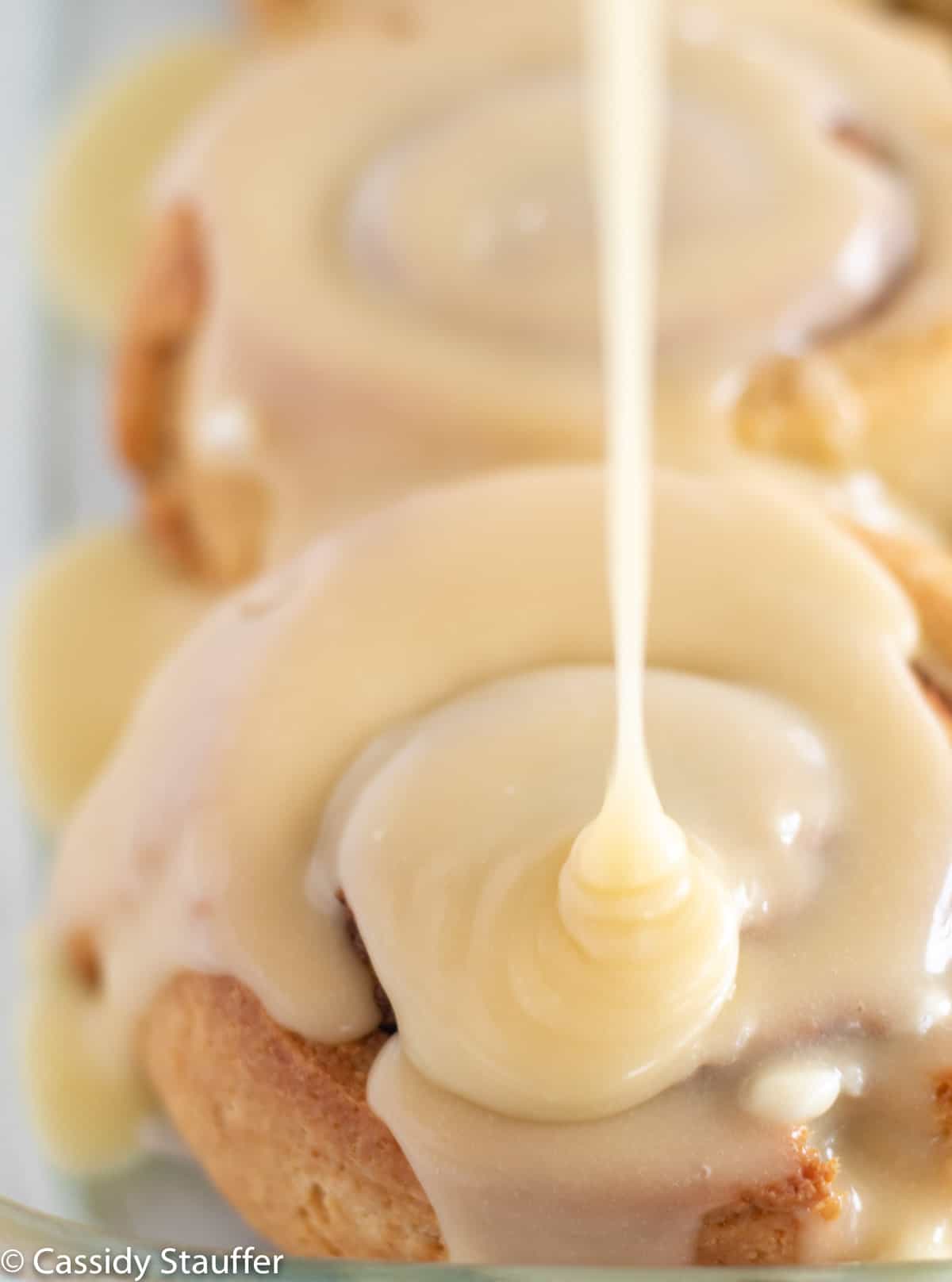
For the frosting, you have the choice of using a traditional powdered sugar frosting or a paleo "cream cheese" frosting.
For the powdered sugar frosting, simply blend some paleo sweetener in a super dry blender until it's powdered to use in place of traditional powdered sugar.
Or if you're using the paleo "cream cheese" frosting, simply blend up some butter (can use non-dairy) and non-hydrogenated shortening with the perfect blend of honey, lemon juice, apple cider vinegar, and other common kitchen ingredients for a perfectly sweet and tangy faux cream cheese frosting.
Serving suggestions
Serve for breakfast with this Starbucks Matcha Latta recipe from the Texanerin or as a sweet treat or dessert.
Storage and faq's
Yes, they can! To do this, fully assemble the rolls and allow them to rise. Then, tightly cover and place in the fridge until ready to bake, up to 2 days. Allow them to set on the countertop while the oven is pre-heating to slightly warm up before baking.
Leftovers can be stored, unfrosted, covered at room temperature 2 to 3 days, or frozen up to 3 months. To freeze, individually wrap the unfrosted rolls in plastic wrap and place them in a freezer-safe baggie. To reheat: Unwrap the rolls and place them in a lined baking dish. Then, loosely tent with foil and heat in a 350-degree oven for 10-15 minutes, or until hot.
These allulose and monk fruit keto powdered sweeteners (Note- I don't recommend erythritol or erythritol blends for frostings) are natural and are acceptable on a paleo diet. Or, you can add xylitol to a coffee grinder or very dry blender, along with 1 tablespoon arrowroot or tapioca per cup. Then, blend until powdered. I've tried this method with coconut palm sugar and we didn't really like it, but it could just be our taste buds! I know many people use coconut palm sugar all the time to make powdered sugar 😀
Looking for more recipes?
I think you'll love this low-carb berry dump cake, keto gingerbread cake with cream cheese frosting, and paleo pie crust recipe!
If you've tried the Paleo Cinnamon Rolls or any other recipe on the blog, please let me know in the comments below!
Craving more? FOLLOW ME on Pinterest, Instagram, Facebook, YouTube, or E-Mail to find more delicious food!
📖 Recipe
Paleo Cinnamon Rolls
Ingredients
For The Dough:
- 3 cups Blanched Almond Flour - very finely ground
- 2 ½ cups Tapioca Flour + More For Rolling Dough - or arrowroot
- 2 tsp. Unflavored Gelatin
- 1 tsp. Xanthan Gum - recommended, or 2 tablespoon psyllium husk POWDER (see notes below)
- 1 tsp. Sea Salt
- ¼ teaspoon Baking Soda
- 2 tsp. Instant Yeast
- 2 tablespoon Butter (can use non-dairy or ghee) - melted
- 1 cup Unsweetened Non-Dairy Milk
- 1 tsp. Distilled White Vinegar Or Apple Cider Vinegar
- 2 large Eggs
- ¼ cup Coconut Palm Sugar
- 1 tsp. Pure Vanilla
Filling:
- ½ cup Butter (can use non-dairy or ghee) - softened, almost melted
- 2 Tbsp. Ground Cinnamon
- ¼ cup Coconut Palm Sugar
- 1 Tbsp. xanthan gum - optional, keeps the filling from seeping out
Traditional Frosting:
- 3 cups Paleo Powdered Sugar - see notes below
- ¼ cup Butter (can use non-dairy or ghee) - melted
- ¼ - ½ cup Unsweetened Non-Dairy Milk - start with ¼ cup and add more as needed to thin
- 1 Tbsp. strong brewed coffee - optional
- 1 tsp. Pure Vanilla
Paleo "Cream Cheese" Frosting:
- ¼ cup Non-Hydrogenated Shortening
- ¼ cup Butter (can use non-dairy or additional shortening) - slightly softened, ghee will work ONLY if it's the right consistency
- ¼ cup Honey
- ½ tsp. Creamy Almond Or Cashew Butter
- ¾ tsp. Apple Cider Vinegar
- ¾ tsp. Fresh Lemon Juice
- ⅛ tsp. Sea Salt - omit if nut butter is salted
- 1 tsp. Pure Vanilla
- 1-2 drops Liquid Vanilla Stevia - optional, as needed
Instructions
- In a medium-sized bowl, mix together the non-dairy milk with the vinegar (we're making buttermilk). Set aside.
- In a large bowl, whisk together the blanched almond flour, tapioca flour, gelatin, xanthan gum, coconut palm sugar, salt, soda, and yeast... all the dry ingredients.
- Add the eggs, butter, and vanilla to the milk mixture and mix well. Add the wet ingredients to the dry and stir to combine. The batter will be thick and sticky (it's not like traditional dough). Knead with your hands if necessary. *Note- If the batter is too thick and sticky to work with, you can add a tiny bit more tapioca flour, a few tablespoons at a time, until the dough comes together. However, it should still be fairly soft and sticky.
- Scrape/pour batter into plastic wrap and wrap tightly. Place in refrigerator 2 to 3 hours, or until dough is thoroughly chilled and firm enough to roll out. Or it can be left in the fridge overnight.
- Tear out a piece of parchment paper that is at least 20 inches long and sprinkle generously with arrowroot or tapioca flour. Cover with plastic wrap and use a rolling pin to roll the dough into a rectangle that is approximately 12 x 18 inches.
- In a medium-sized bowl, mix together the filling ingredients. This includes the softened butter, cinnamon, coconut palm sugar, and xanthan gum (if using). Spread evenly over the dough, leaving the bottom inch dry lengthwise. See pictures in the post if needed.
- Carefully start rolling the dough tightly making at least 4 or 5 rotations towards the bottom dry part of the dough. You can lift up the parchment paper to help get the dough up and rolling, moving slowly and patching up any cracks as you go. When you come to the end, pinch the bottom edge of the dough into the log so it creates a seal. *Note- If the dough is too sticky to roll up, pop it in the freezer for about 15 minutes, or until firm enough to work with.
- Using a very sharp greased knife, cut the log into 8 equal-sized rolls. Cutting them into 8 rolls makes 8 huge rolls, however, you can cut them into 10 to 12 if preferred. If you do this, you will need to slightly reduce the baking time.
- Transfer rolls to a large parchment-lined or greased baking dish and slightly press down on each roll.
- To rise: Tightly cover the rolls with plastic wrap or aluminum foil and preheat the oven to 150 degrees. When the oven is preheated, turn off the oven, add the rolls, and leave the door cracked. After 30 minutes, close the door to finish rising. Allow to rise for 60 to 90 minutes.
- Remove rolls and preheat oven to 350 degrees.
- Bake 30 to 35 minutes, or until nicely browned. Rotate after 20 minutes to ensure even baking and check to make sure they're not baking too fast since all ovens are different.
- Top with traditional frosting or paleo "cream cheese" frosting (recipes below) and serve hot. Only frost the ones you plan on eating.
Traditional frosting:
- Whisk all ingredients in a large mixing bowl. Start with ¼ cup non-dairy milk and add more as needed to thin, however, the frosting should be fairly thick. Pour over hot rolls.
Paleo "Cream Cheese" Frosting:
- Sightly soften your butter. I prefer this method from Sally's Baking Addiction. Then, blend all ingredients on low or until well combined.
- Turn speed to medium-high and blend until smooth. Thin with non-dairy milk as needed. Pour over hot rolls. Unused frosting can be stored covered in the fridge for 2-3 days. Slightly warm before using.
Add Your Own Notes
Notes
- Xanthan gum: While I prefer using xanthan gum, since there are varying thoughts on whether xanthan gum is paleo or not, you can replace it with psyllium husk powder. However, it results in more of a whole-wheat tasting cinnamon roll and the dough can be just a tiny bit harder to roll out. Also, be sure to use psyllium husk POWDER, not whole psyllium husks as they will not work in this recipe. Psyllium can usually be found in the colon cleansing section of health food stores, due to it being so high in fiber.
- Almond flour: Unfortunately, almond flour is very unique and the only replacement I know of would be sunflower seed flour, but I've never tested it.
- Gelatin: If you can't find unflavored gelatin, you can replace it with pectin. In fact, this recipe originally called for pectin, however, I've found gelatin works a tiny bit better and is easier to find. While it's not a 'make or break' ingredient, it helps to firm up and hold the dough together. Which immensely helps when rolling it up!
- Butter: You can replace the butter with dairy-free butter or ghee. If those aren't an option for you, you can replace the butter with a mild-tasting oil such as avocado oil or refined (to reduce the coconut taste) coconut oil. However, I highly recommend using butter, ghee, or a butter substitute! It's a taste you can't achieve with oil.
- The dough needs to sit in the fridge for several hours to overnight, so plan ahead!
- To make the rolls ahead of time: Fully assemble the rolls and allow them to rise. Then, tightly cover and place in the fridge until ready to bake, up to 2 days. Allow them to set on the countertop while the oven is pre-heating to slightly warm up before baking.
- To make paleo powdered sugar: These allulose and monk fruit keto powdered sweeteners (Note- I don't recommend the erythritol or erythritol blends for frostings) are natural and are acceptable on a paleo diet. Or, you can add xylitol to a coffee grinder or very dry blender, along with 1 tablespoon arrowroot or tapioca per cup. Then, blend until powdered. I've tried this method with coconut palm sugar and we didn't really like it, but it could just be our taste buds! I know many people use coconut palm sugar all the time to make powdered sugar 😀
- Leftovers can be stored, unfrosted, covered at room temperature 2 to 3 days, or frozen. To freeze, wrap each cinnamon roll in plastic wrap then place in a large freezer-safe baggie. To reheat: Unwrap the rolls and place them in a lined baking dish. Then, loosely tent with foil and heat in a 350-degree oven for 10-15 minutes, or until hot.
- If you prefer Keto, check out my Keto Cinnamon Rolls
- Also, you might want to check out my Keto Cinnamon Rolls YouTube Video! While the recipe is slightly different, it's the same basic process 🙂
Nutrition
NET CARBS = Total Carbs - Fiber - Allulose - Xylitol
Nutritional information is approximate and may vary. Sugar alcohols, xylitol, and allulose are included in the total carbs and fiber.
Looking for more information on the keto diet? Check out my


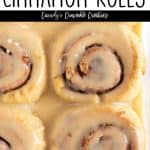


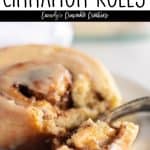
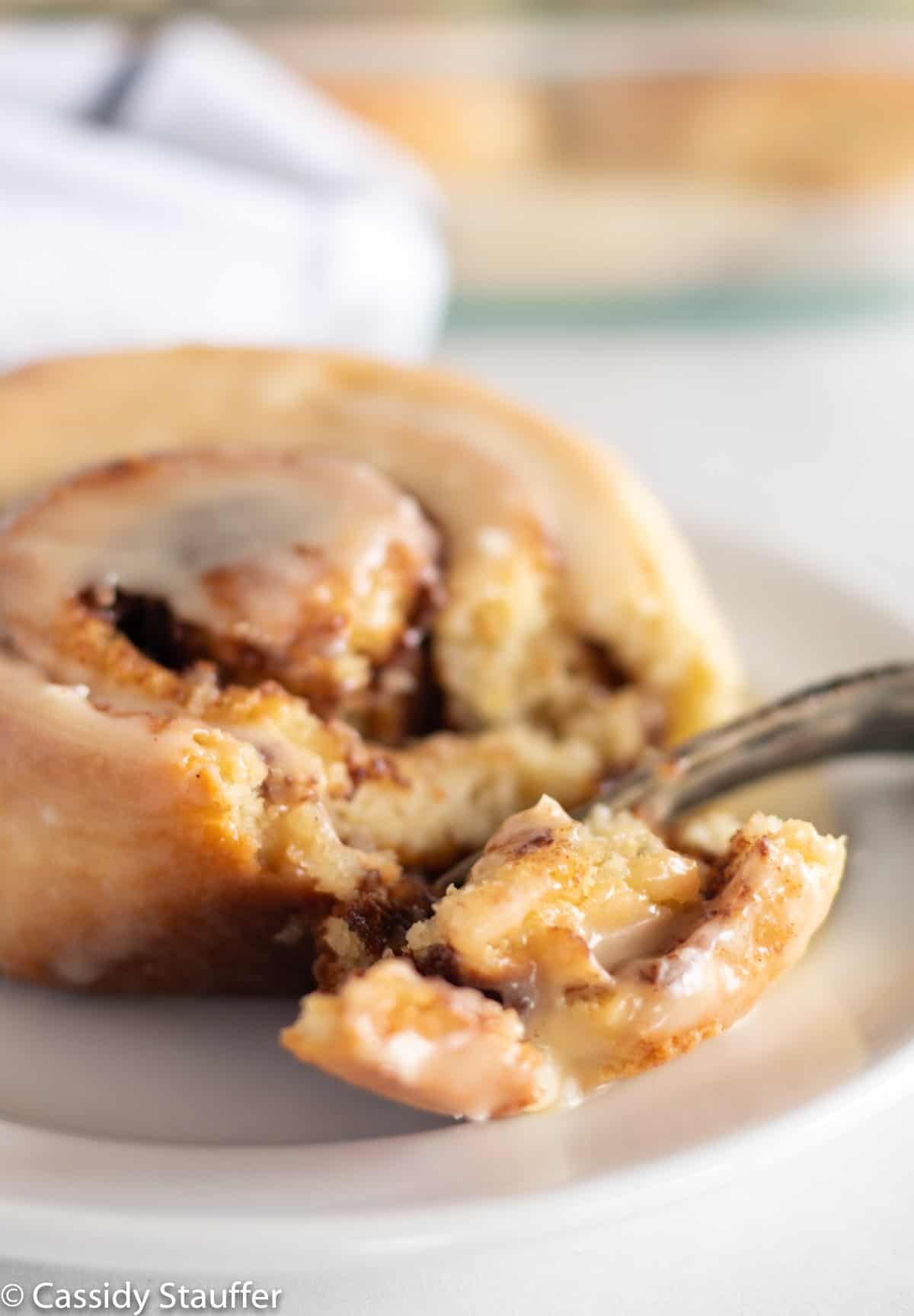
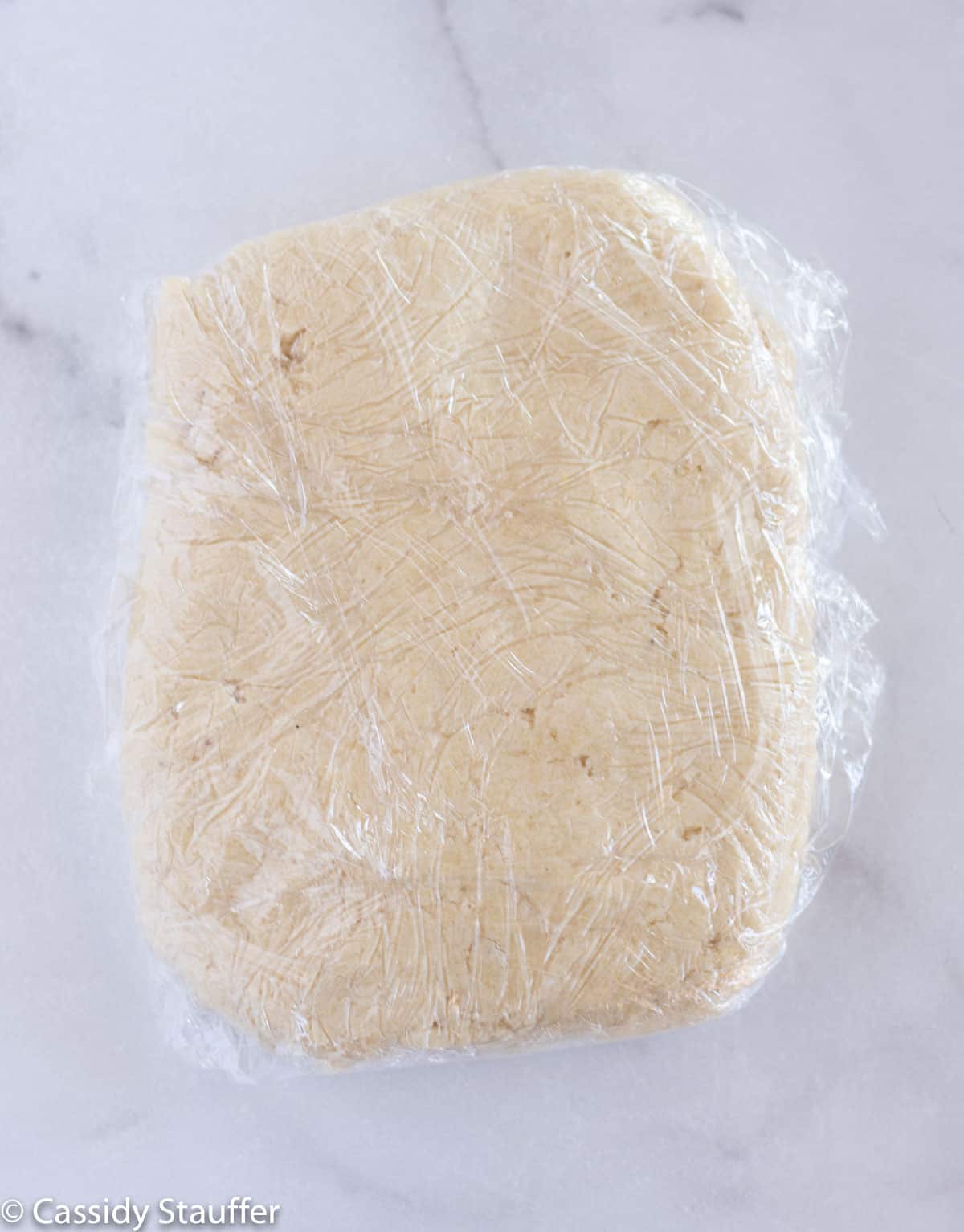
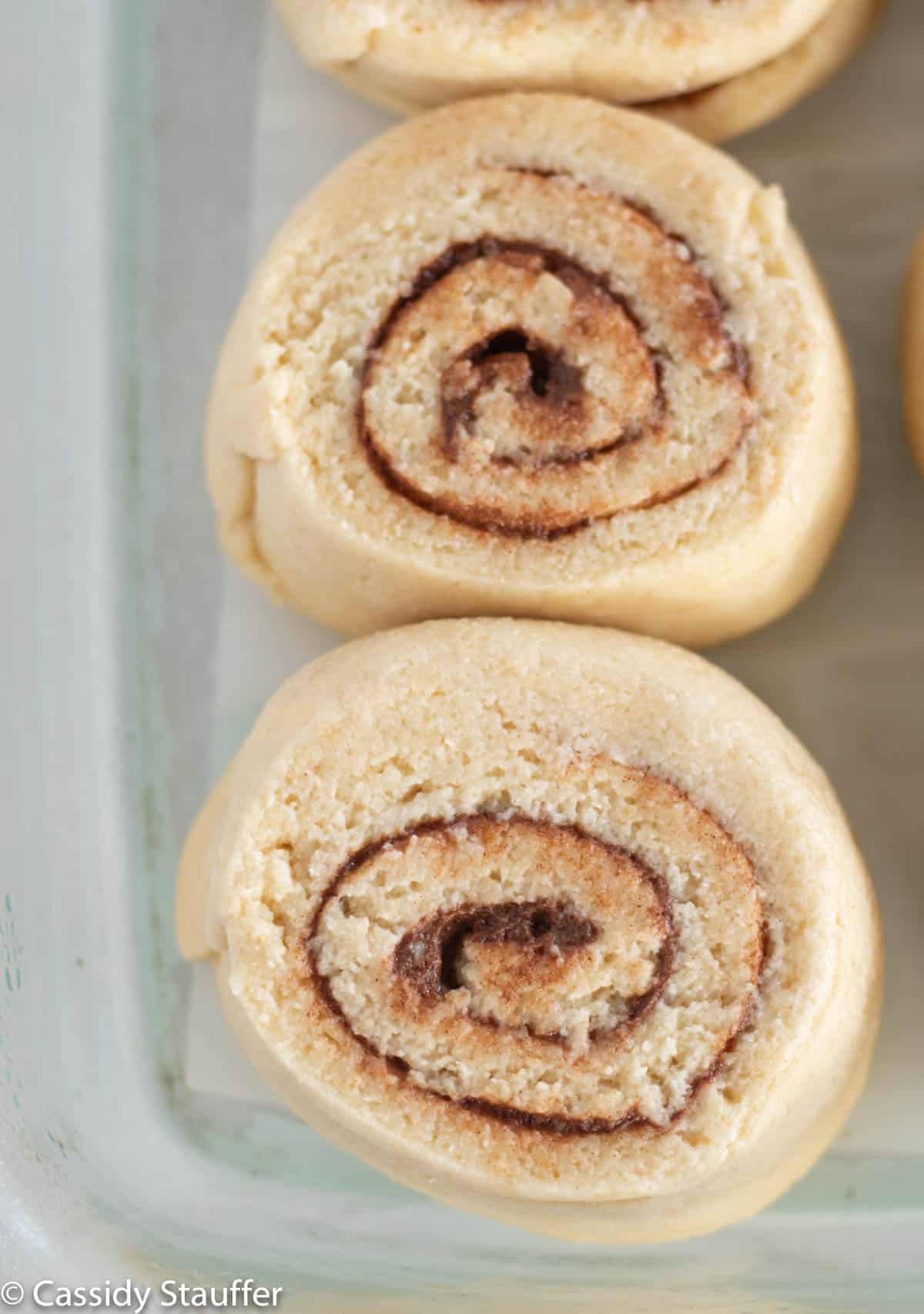
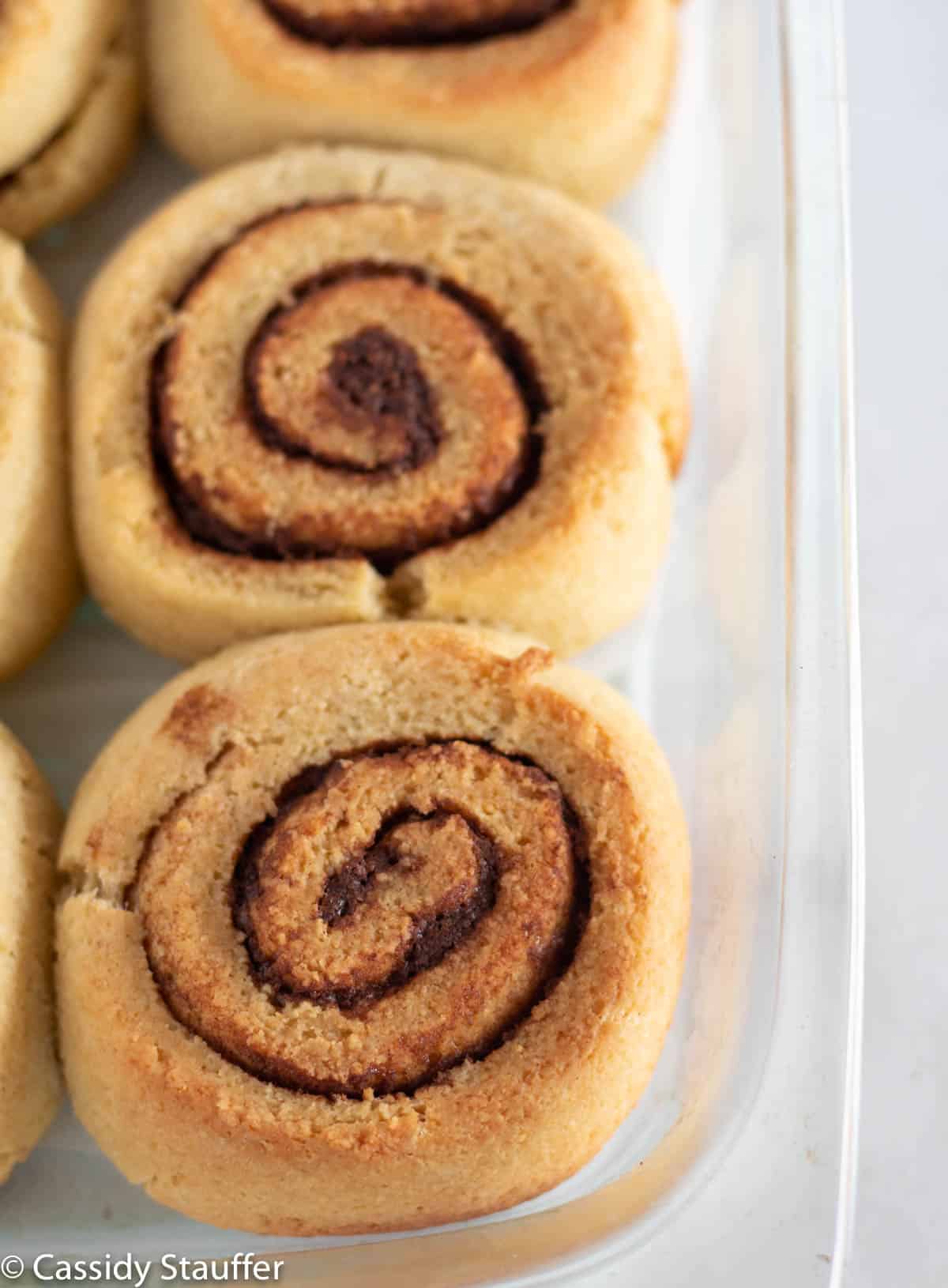
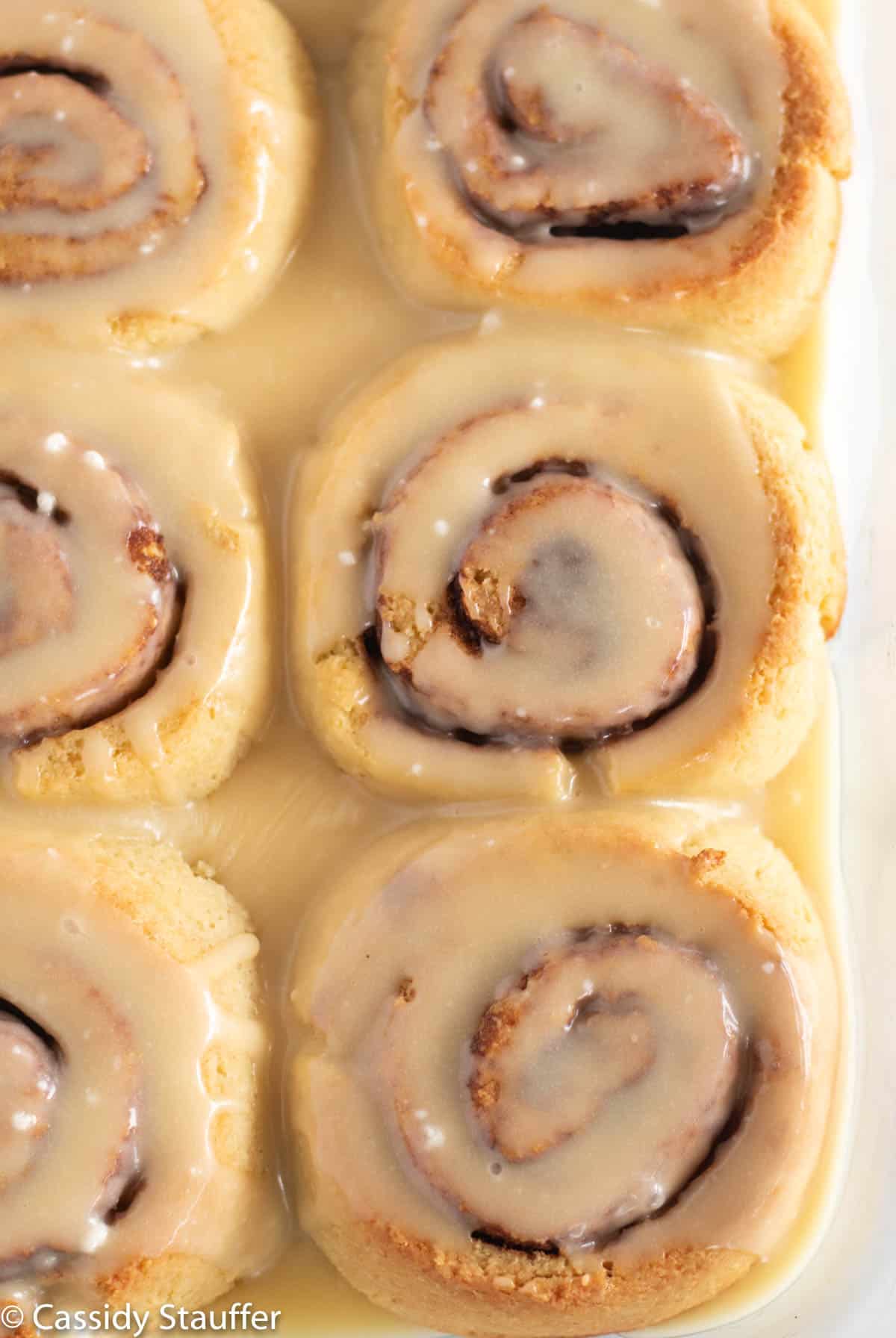
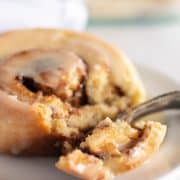
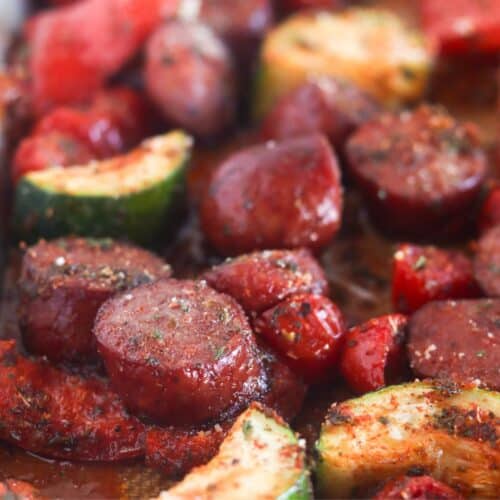
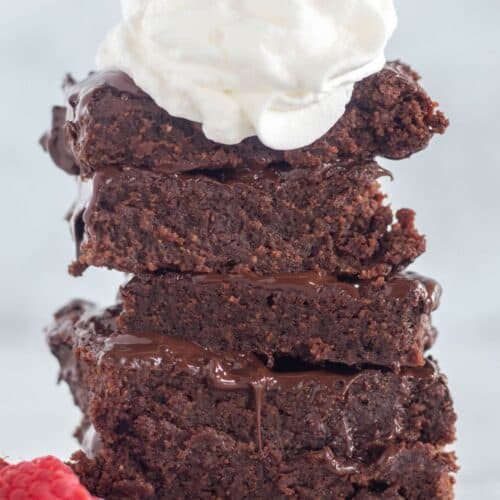
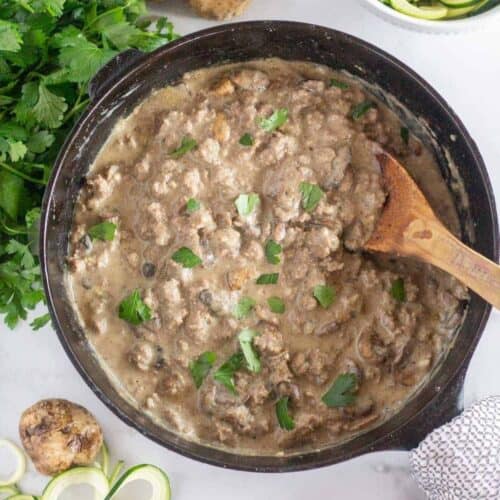
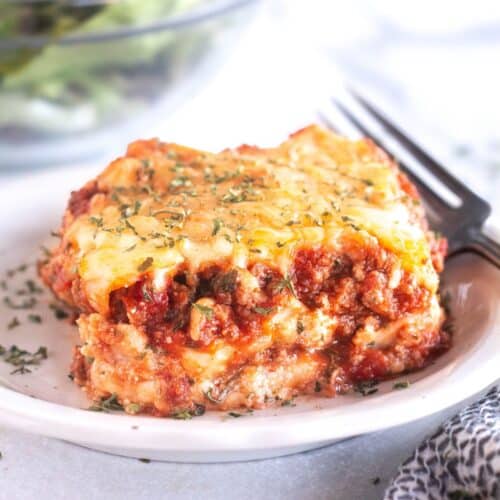
Melanie Phares says
Cassidy, I've been making your recipe since 2015 and it is perfect every time. I not only make cinnamon rolls, but I use the dough as the pastry for a wonderful apple dumpling.
In this 2020 version, you've already incorporated some of my hacks, but one I find completely useful is rolling out the dough (immediately, no need to wait 2-3 hours) between sheets of plastic wrap. This is a total time and mess saver. I don't use flour on the surface and it rolls up like magic.
Cassidy Stauffer says
Oh my goodness, thank you - I'm so excited you like them!! And thanks for letting me know about your hacks! ...I'm glad the dough works for you without refrigerating it. I included that step in the recipe because sometimes the dough is too sticky to roll up (this is due to humidity, brands, etc...), but you can totally skip this step if it works for you 🙂
Thanks again, you made my day!!!
-Cassidy